Blog
9 Best Ground Cover Plants to Prevent Weeds
We all know that keeping weeds at bay can be one of the most challenging tasks in the garden. Weeds seem to pop up everywhere, and before you know it, your beautiful flower bed or vegetable patch is overrun. But don’t worry, there’s an easier way to control weeds without spending hours pulling them out – ground cover plants.
Ground covers are low-maintenance heroes that not only suppress weeds but also add beauty, texture, and interest to your garden. They create a dense carpet of foliage, blocking out the sunlight that weeds need to thrive. Whether you’re dealing with sunny spots or shaded areas, there’s a perfect ground cover plant for you. Let’s dive into the 9 best ground cover plants to prevent weeds that can help keep your garden weed-free!
1. Creeping Jenny (Lysimachia nummularia)
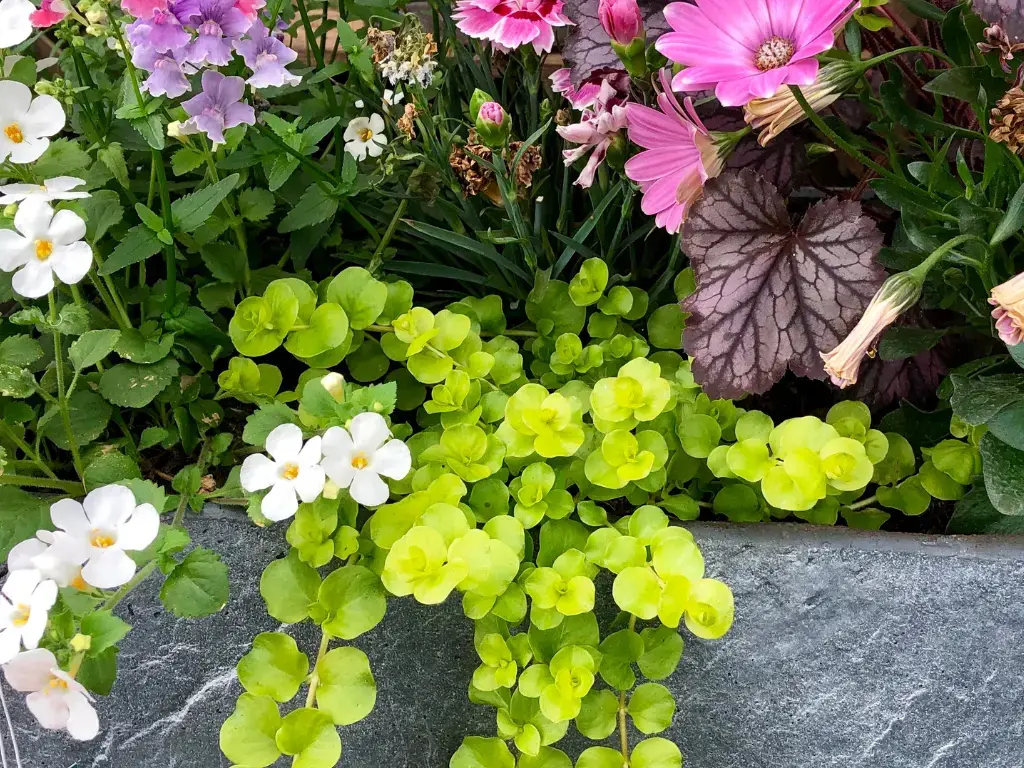
Sun Exposure: Full sun to part shade
Soil Needs: Moist, well-drained
USDA Growing Zones: 3 to 9
Creeping Jenny is a fantastic choice if you’re looking for a plant that spreads quickly and provides a vibrant splash of green to your garden. This fast-growing perennial works wonders in both sunny and partially shaded spots, making it incredibly versatile. Its dense, lush foliage and its ability to rapidly cover ground make it a weed-busting powerhouse. Creeping Jenny doesn’t just help with weed control — it also produces small, cheerful yellow flowers in the spring, adding a pop of color to your landscape.
Pro Tip: Creeping Jenny thrives in moist soil, so if you have a garden bed that tends to stay a little on the damp side, this is a great option to fill in the space and keep weeds under control.
2. Ground Morning Glory (Convolvulus sabatius)
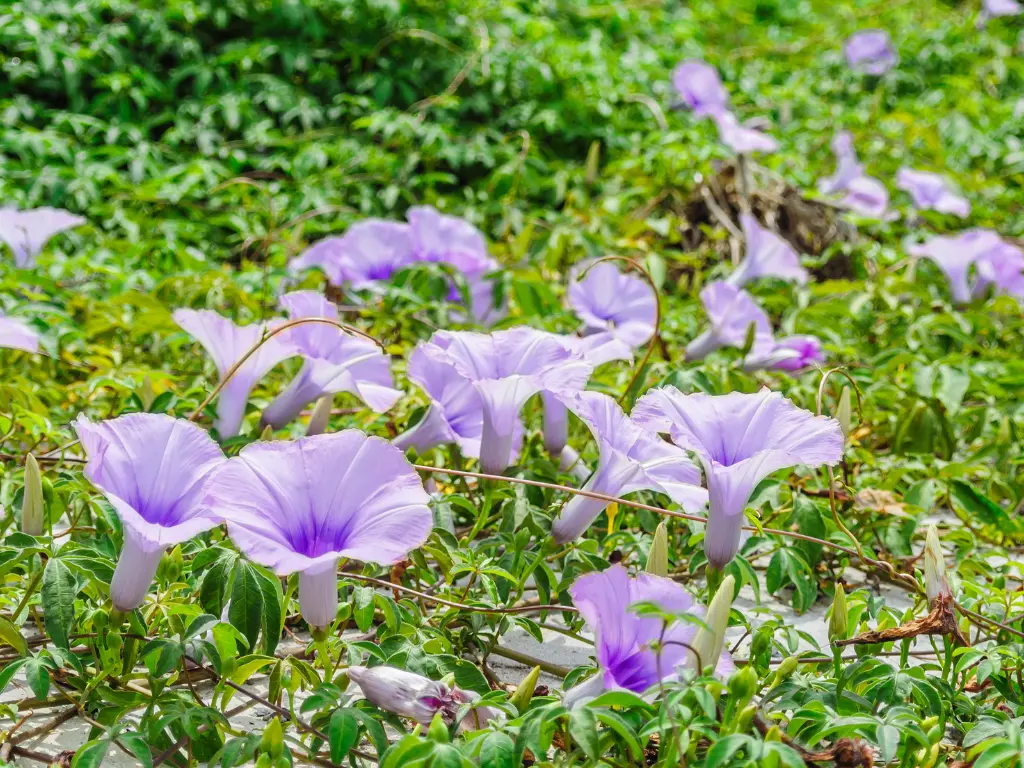
Sun Exposure: Full sun
Soil Needs: Well-drained, moderately fertile
USDA Growing Zones: 5 to 9
For gardeners who love a plant with a bit of flair, Ground Morning Glory is one of the best Ground Cover Plants to Prevent Weeds. Its trailing vines and striking funnel-shaped flowers can create a beautiful carpet in your garden. This hardy plant is not only stunning but also effective at suppressing weeds. Ground Morning Glory is a vigorous grower, quickly spreading and covering the ground, making it a reliable choice for large areas. The vibrant flowers in shades of blue, pink, or purple are a bonus, attracting pollinators like bees and butterflies.
Pro Tip: Plant this in full sun to get the best growth and flowering. It’s perfect for filling in those bare spots that are too large for other plants.
3. Vinca Periwinkle (Vinca minor)
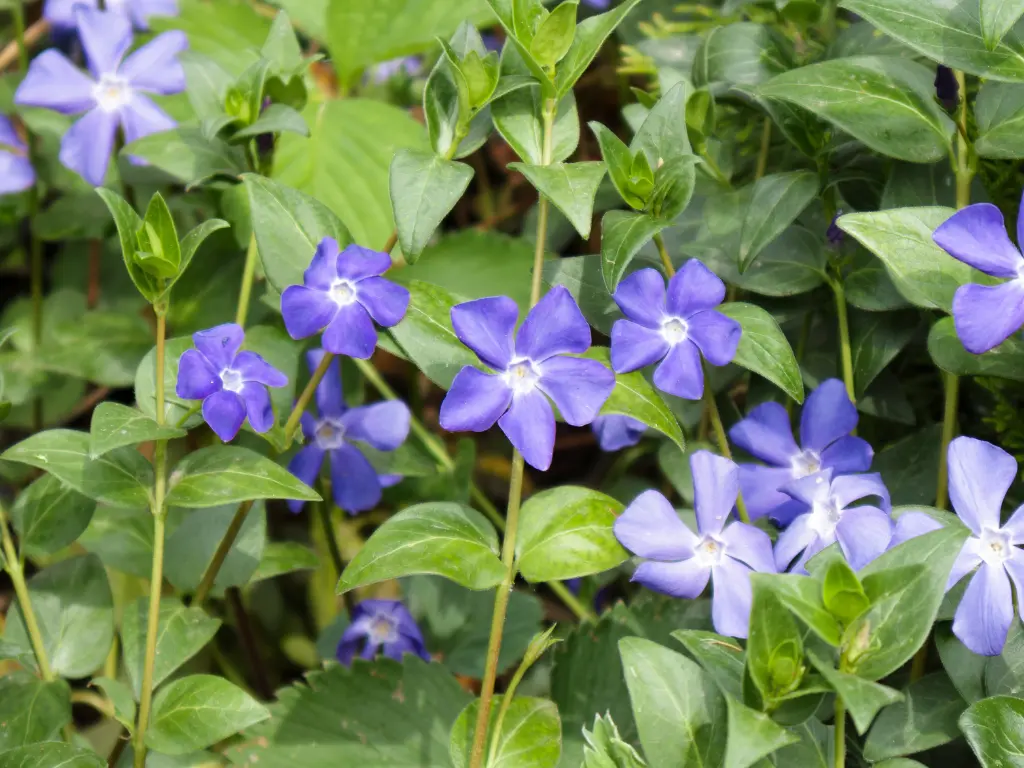
Sun Exposure: Full sun to part shade
Soil Needs: Well-drained, moderately fertile
USDA Growing Zones: 4 to 9
Vinca Periwinkle is a beloved ground cover plant that offers both beauty and practicality. With its shiny, dark green leaves and lovely blue or purple flowers, it quickly forms a dense carpet that helps to prevent weeds. Vinca spreads vigorously, blocking out sunlight and preventing weeds from taking hold. However, it can become invasive in some areas, so be sure to monitor its growth and trim it back if necessary.
Pro Tip: Vinca thrives in both sun and shade, making it highly versatile. It’s perfect for areas where you want a fast-growing ground cover that requires minimal care but will keep weeds in check.
Read more: How to Grow Vinca Periwinkle – Sprawling Ground Cover Plant for Your Garden
4. Creeping Thyme (Thymus serpyllum)
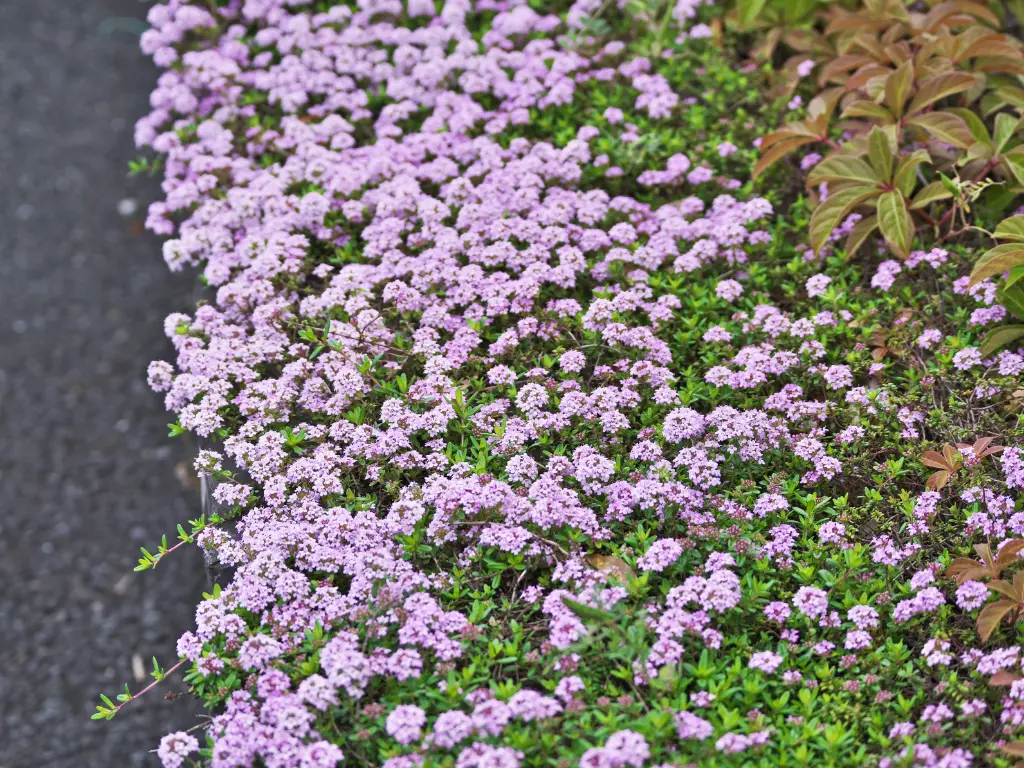
Sun Exposure: Full sun
Soil Needs: Well-drained, alkaline
USDA Growing Zones: 4 to 8
Creeping Thyme is a must-have for gardeners looking to fill gaps between stepping stones or along paths. Not only is this hardy ground cover effective at preventing weeds, but it also smells amazing! This fragrant herb grows only a few inches tall and spreads quickly, creating a soft, thick carpet that chokes out unwanted plants. Plus, it produces beautiful pink, purple, or white flowers that attract pollinators like bees and butterflies.
Pro Tip: Creeping thyme loves full sun and dry, well-drained soil. It’s perfect for drought-prone areas and provides lovely ground cover without the need for constant watering.
5. Spotted Deadnettle (Lamium maculatum)
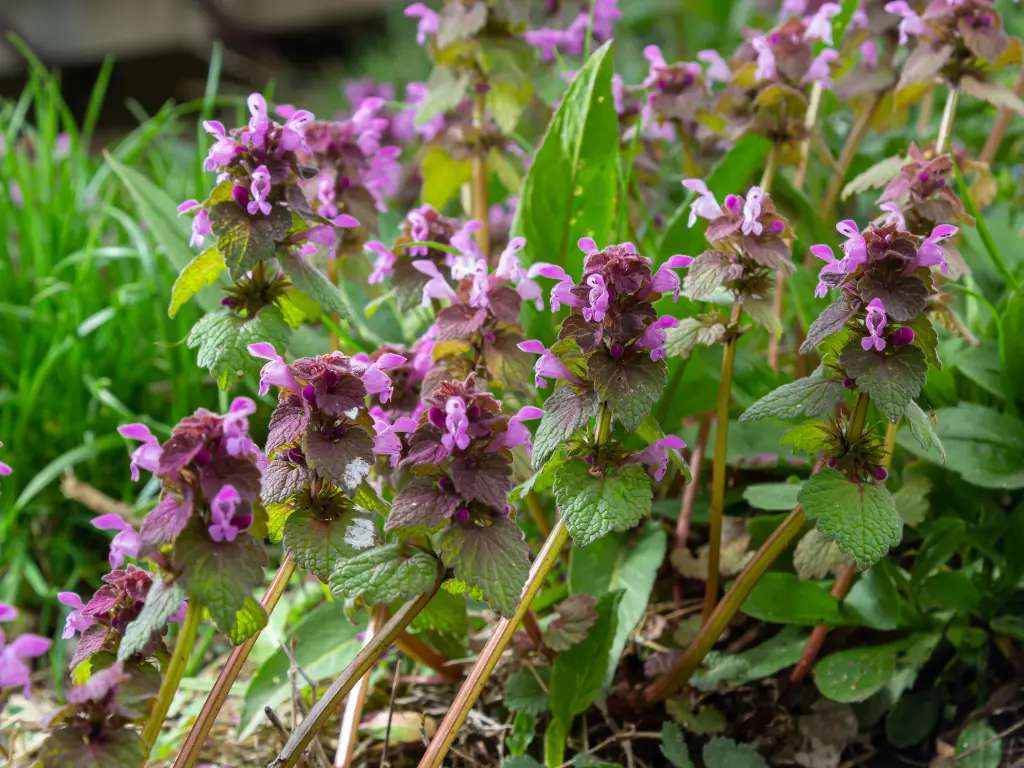
Sun Exposure: Full shade to part shade
Soil Needs: Moist, well-drained
USDA Growing Zones: 4 to 8
If you’re dealing with a particularly shady area, Spotted Deadnettle is a fantastic option for weed control. This perennial plant forms a dense mat of foliage that easily crowds out weeds. Its silver-green leaves are beautiful year-round, and it produces lovely flowers in shades of pink, purple, and white in spring and summer. Though it can be invasive in some areas, where it’s not a problem, Spotted Deadnettle is a great low-maintenance ground cover for shaded gardens.
Pro Tip: Be mindful of its growth — in some regions, Spotted Deadnettle can spread quickly and become invasive. Always check with your local extension office before planting.
6. Hosta (Hosta spp.)
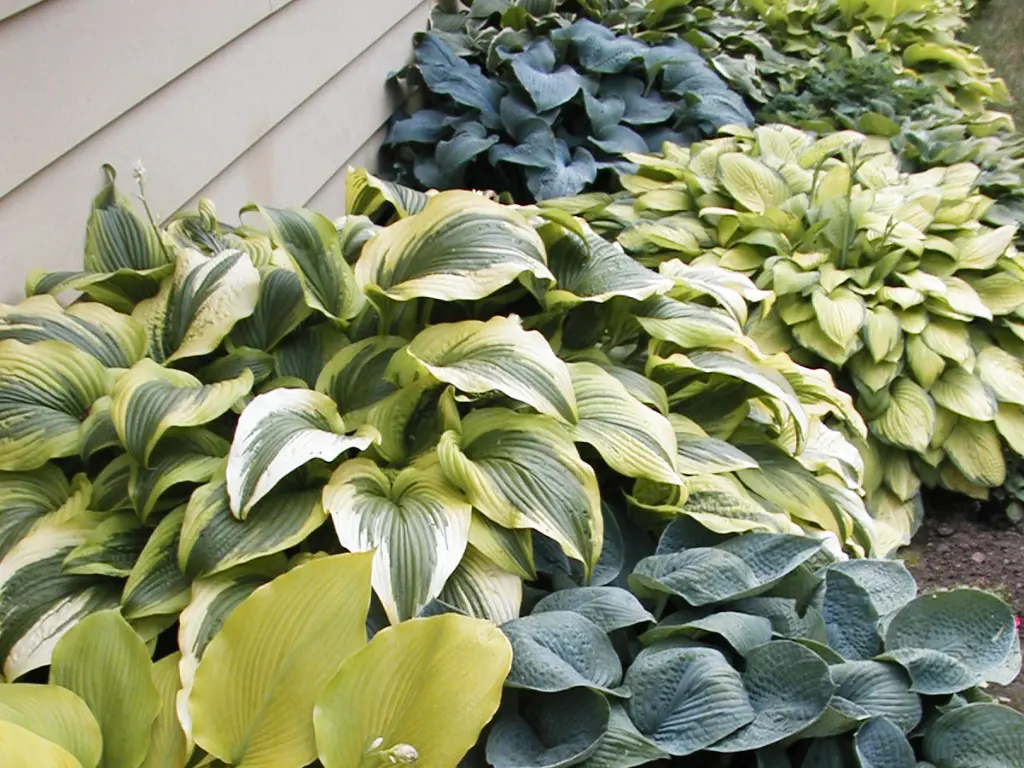
Sun Exposure: Part shade to full shade
Soil Needs: Moist, well-drained
USDA Growing Zones: 3 to 9
Hostas are a gardener’s favorite, especially in shady spots where few other plants can thrive. Known for their beautiful foliage, Hostas make an excellent ground cover plant that helps keep weeds at bay. They spread slowly but steadily, forming dense clumps of leaves that provide natural weed suppression. Plus, Hostas offer a range of colors and sizes, making them perfect for creating a layered, textured look in your garden.
Pro Tip: While Hostas are perfect for shaded areas, they do need regular watering, especially in hot, dry weather. Mulch around them to help retain moisture and keep weeds down.
7. Japanese Spurge (Pachysandra terminalis)
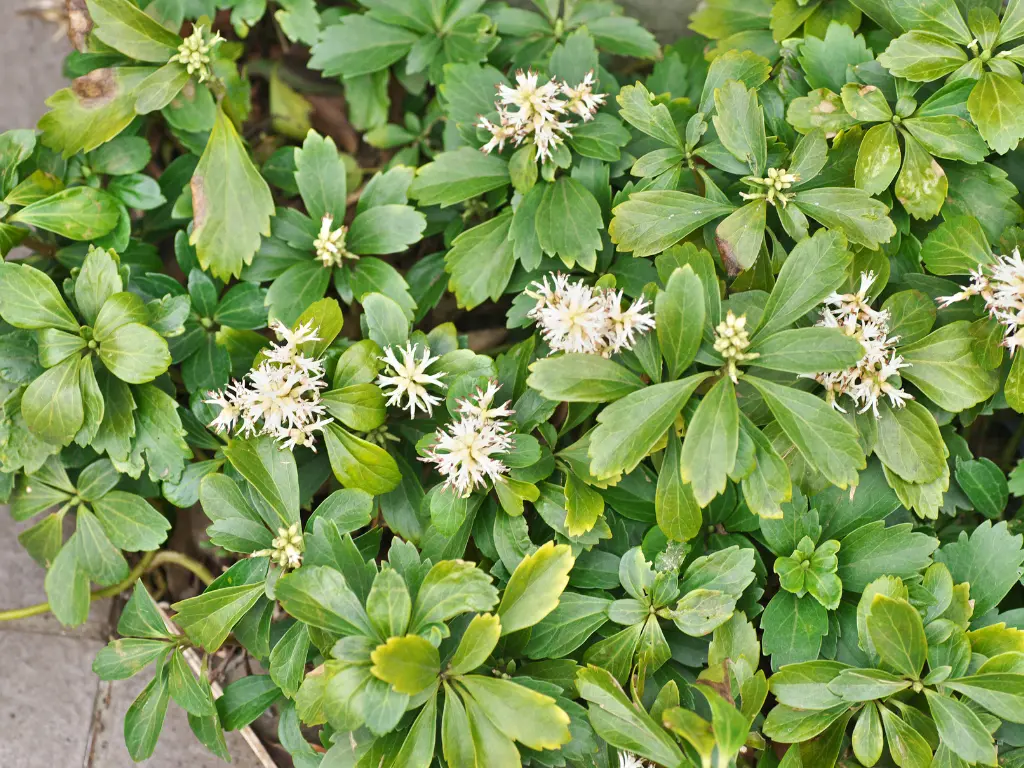
Sun Exposure: Part shade to full shade
Soil Needs: Moist, well-drained
USDA Growing Zones: 4 to 9
Japanese Spurge is a fast-growing, evergreen ground cover plant that thrives in shaded areas. Its dense foliage creates an impenetrable barrier that blocks weeds and provides year-round coverage. Japanese Spurge is perfect for planting under trees or in shaded corners where grass struggles to grow. It’s a reliable, low-maintenance plant that will fill your garden with lush, green leaves.
Pro Tip: Japanese Spurge can tolerate poor soil and dry conditions once established, making it an excellent choice for tough, shady spots.
8. Woolly Thyme (Thymus pseudolanuginosus)
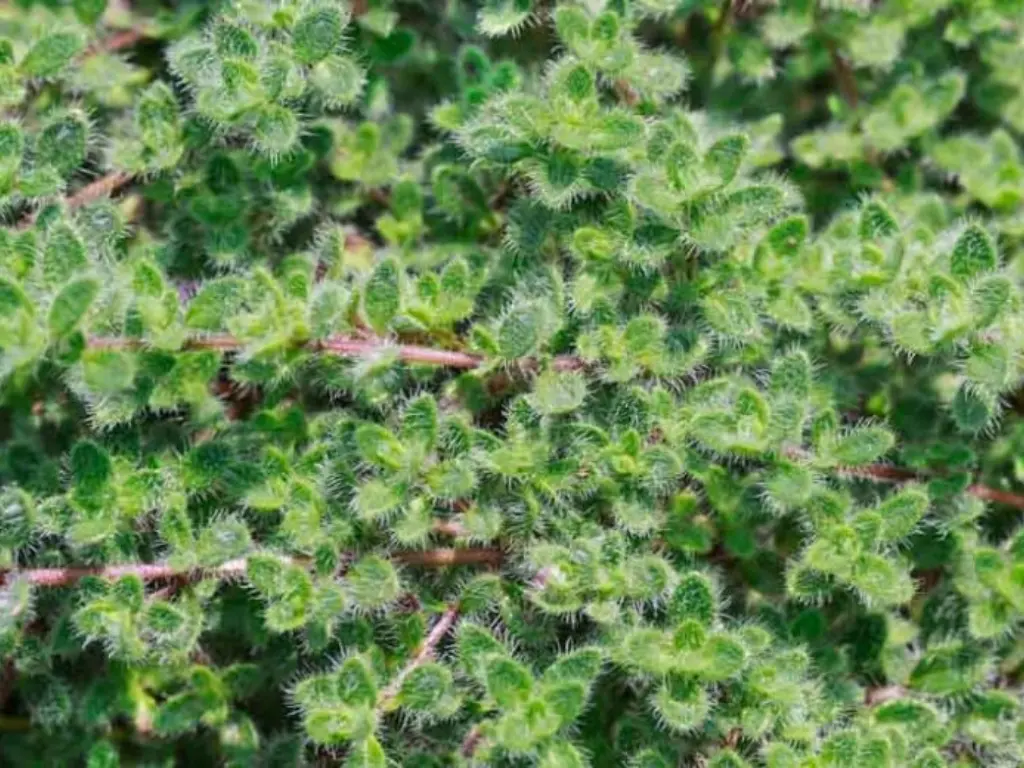
Sun Exposure: Full sun
Soil Needs: Well-drained
USDA Growing Zones: 4 to 9
Woolly Thyme is a beautiful, silvery ground cover that’s perfect for filling in those dry, rocky patches of your garden. It spreads quickly and covers ground efficiently, helping to prevent weeds from taking root. Its low-growing, cushion-like form is great for creating a soft, attractive texture in your landscape. The plant’s tiny pink or purple flowers in summer are also a treat for the eyes and for pollinators.
Pro Tip: Woolly thyme is an excellent choice for xeriscaping, as it tolerates dry conditions and low-water environments.
9. Bunchberry (Cornus canadensis)
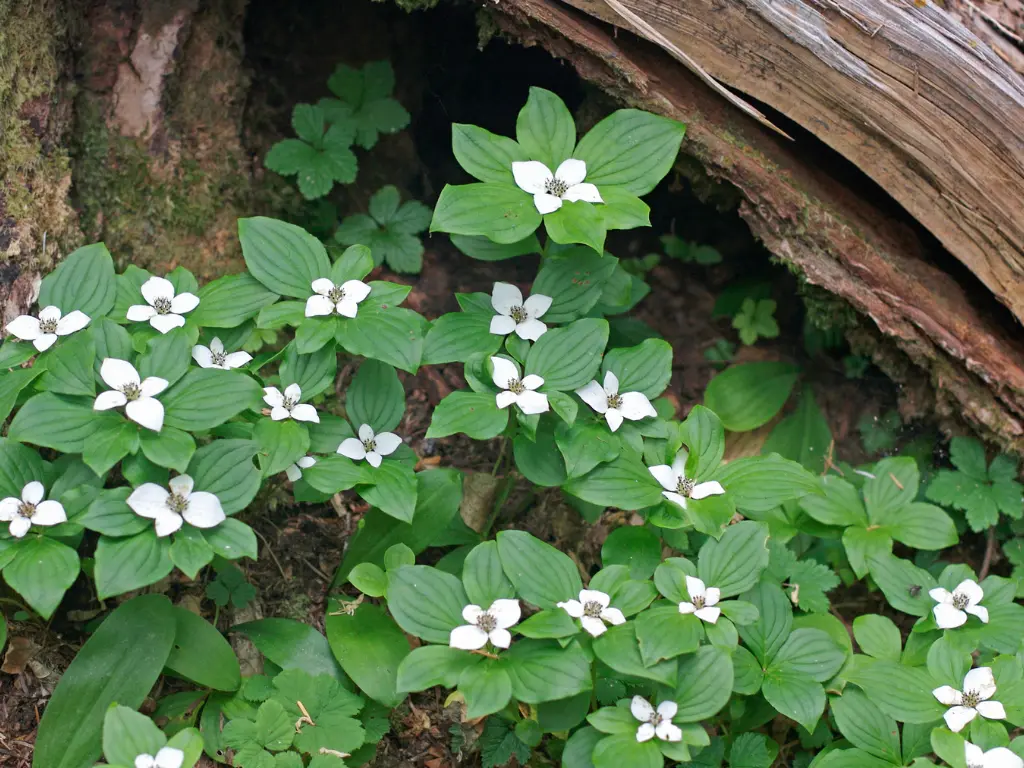
Sun Exposure: Part shade
Soil Needs: Moist, well-drained, acid
USDA Growing Zones: 2 to 6
Bunchberry is a small but mighty ground cover that excels in shady, woodland gardens. Its dense, spreading growth helps suppress weeds and create a beautiful carpet of greenery. In spring, it produces charming white flowers, followed by bright red berries in the fall, which add a pop of color to your garden. Bunchberry is especially resistant to damage from deer and rabbits, making it a great choice for more natural gardens.
Pro Tip: Bunchberry thrives in rich, acidic soil, so it’s perfect for creating a native woodland garden with minimal care.
Conclusion
Ground cover plants are the unsung heroes of the garden, providing not just beauty and texture, but also invaluable weed control. By choosing the right ground cover for your garden’s conditions, you can enjoy a stunning, low-maintenance landscape with fewer weeds and less effort. Whether you’re working with sunny or shady spots, there’s a ground cover plant that’s perfect for your garden.
So, next time you’re planning your garden layout, consider these 9 weed-busting ground covers. Your future self will thank you when your garden stays neat, tidy, and weed-free with minimal work! Happy gardening!
Frequently Asked Questions (FAQs)
Q1: Do ground cover plants really help with weed prevention?
A1: Yes! Ground cover plants are excellent for suppressing weeds. They form a dense mat of foliage that blocks sunlight, preventing weed seeds from germinating. Additionally, as these plants grow, their spreading nature competes with weeds for nutrients and space, making it harder for unwanted plants to take root.
Q2: Can ground covers be used in both sun and shade?
A2: Absolutely! Many ground cover plants are adaptable to different light conditions. Some thrive in full sun, while others excel in shady areas. When selecting a ground cover, it’s important to choose the right plant for your garden’s specific lighting conditions. For example, Creeping Jenny and Woolly Thyme prefer full sun, while Sweet Woodruff and Bunchberry are ideal for shaded spots.
Q3: Are ground cover plants low-maintenance?
A3: Yes, one of the main benefits of ground cover plants is their low-maintenance nature. Once established, they require little care beyond occasional watering, trimming, or dividing. Many of these plants are drought-tolerant, disease-resistant, and will naturally suppress weeds, reducing the need for constant weeding and upkeep.
Q4: Will ground cover plants spread too much and become invasive?
A4: Some ground cover plants can spread aggressively, but this depends on the species and growing conditions. Plants like Creeping Jenny and Spotted Deadnettle can be quite vigorous, so it’s important to monitor their growth. If you’re concerned about invasiveness, opt for less aggressive varieties or keep them in confined spaces, such as garden beds or containers, where they won’t overtake other plants.
Q5: How do I maintain ground cover plants once they’re established?
A5: Ground cover plants are generally very low-maintenance, but a little attention can help them thrive. Periodically trim back any overgrown or leggy stems to maintain a neat appearance. In dry spells, make sure they receive enough water, especially if they’re young or newly planted. You can also divide or thin out the plants every few years to ensure they don’t become too crowded.
Q6: Can I use ground cover plants to replace grass in my lawn?
A6: Yes, ground covers are a great alternative to traditional grass lawns, especially in areas where grass struggles to grow or in gardens where low-maintenance solutions are desired. Many ground covers are drought-tolerant, require less mowing, and can handle traffic better than grass in certain conditions. Choose a ground cover that matches the sunlight and soil type of your lawn area for the best results.
Q7: How soon will my ground cover plants start suppressing weeds?
A7: Most ground covers will start suppressing weeds within a few months of being planted, but it can take a season or two for them to establish and spread fully. During the early stages of growth, you might need to help by removing a few weeds by hand. Once the plants are well-established, they will naturally outcompete weeds for resources, reducing the need for intervention.
Q8: Are ground covers suitable for both ornamental and practical purposes?
A8: Yes! Ground covers are versatile, serving both ornamental and practical purposes. While they provide excellent weed control and reduce maintenance, they also add beauty and texture to the landscape. Many ground covers offer seasonal interest with colorful flowers, unique foliage, and even berries, making them an attractive addition to your garden.

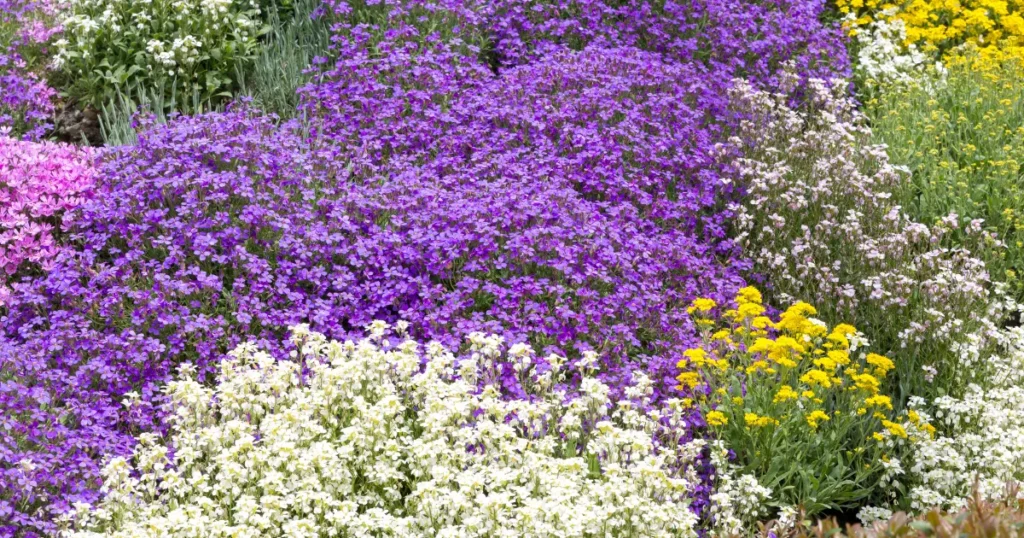
9 Common Christmas Cactus Problems and How to Fix Them
Have you ever walked past your Christmas cactus and wondered why it suddenly looks sad? [...]
Nov
Swedish Ivy Care: How to Grow a Healthy, Thriving Plant
Have you ever looked at your Swedish Ivy and wondered why the leaves are turning [...]
Nov
Avoid These 10 Garlic Planting Mistakes for Bigger, Healthier Bulbs
Growing garlic at home is one of the most satisfying things a gardener can do [...]
Nov
How to Prevent Christmas Cactus Bud Drop: Tips for a Healthy Bloom
Have you ever noticed your beautiful Christmas cactus (Schlumbergera) starting to lose its buds just [...]
Nov
Discover 7 Stunning Types of Night-Blooming Cereus
Have you ever waited for a flower that only opens at night and then disappears [...]
Nov
How to Propagate Comfrey from Root Cuttings: Easy Guide for Beginners
If you’re looking to grow your own healthy comfrey plants without spending too much, propagating [...]
Nov